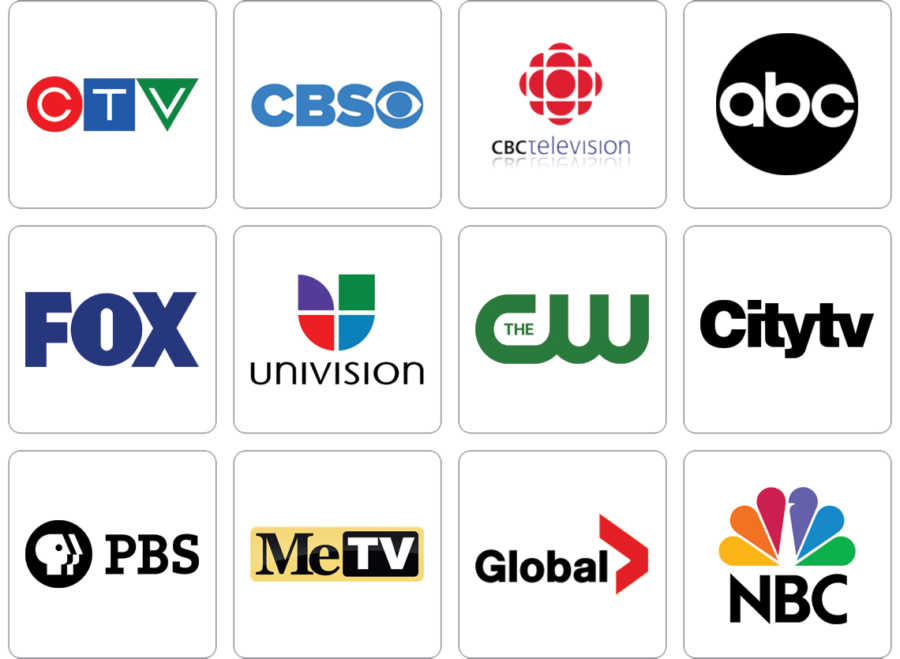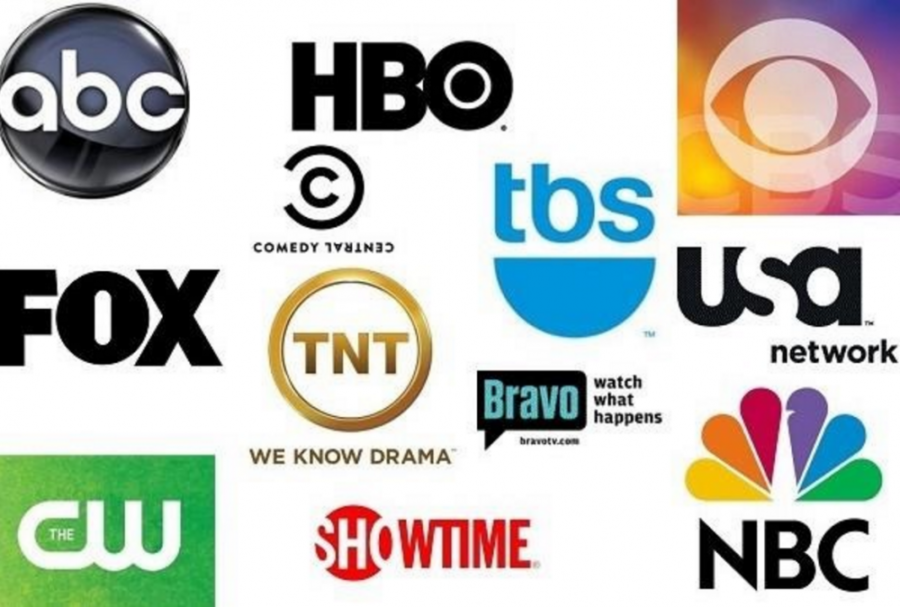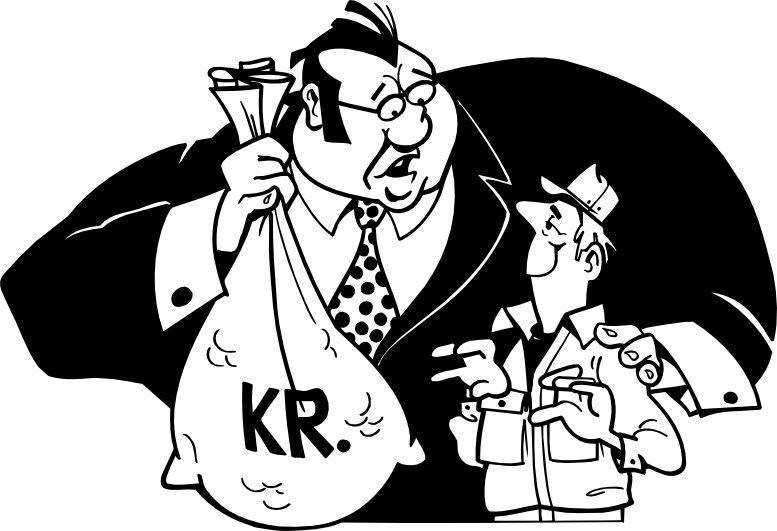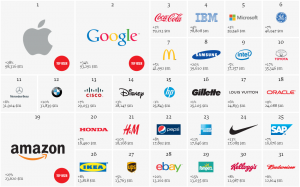Pitch Your Ideas!
Let us
Pitch
Produce
Promote
your ideas to the industry!

Why are we doing it?
In presenting your ideas to investors, companies, television stations, movie companies, broadcasters and other industries; we are able to help you and your good ideas.
In so many ways, content and popularity rules!
Great inventions, stories and ideas have value if
they reach investors and if they reach their market.
Being agents, managers, promoters, producers and
developers allows us to get your idea in front of the industry!

How do you benefit?
Now you can get your idea to the industry as well as the public.
We have the investors and the contacts that you do not have!
Great inventions, stories and ideas have reach their target!
We earn 10% commission.
How many industries are looking?
Here is a question for you:
Do you need a casting agent?
Do you need a director?
Do you need a grant?
Do you need a lawyer?
Do you need a loan?
Do you need a manager?
Do you need a music producer?
Do you need a producer?
Do you need a publisher?
Do you need a talent agent?
Do you need a talent manager?
Do you need a video editor?
Do you need a website?
Do you need an agent?
Do you need an app?
Do you need an entertainment attorney?
Do you need an executive producer?
Do you need investors?
Do you need venture capitalists?

Who is looking for ideas?
Many companies and industries are looking for NEW ideas and BETTER ways of doing things.
Even though companies have development departments and engineers and focus groups; they are still looking for NEW IDEAS and BETTER WAYS of doing things.
Can you be on TV?
TV is still the dominant player in advertising, with consumers watching more than 4 hours per day — but screens are morphing into tablets and smartphones, and content distribution has never been more complex.
We plan television campaigns for maximum impact and cost savings while also addressing modern multi-screen behavior.
Social media is an ever-changing ecosystem of humans sharing content. We help marketers break out in the space.
Our social media division, The Socialists, covers everything from social media monitoring and trend identification to content strategy, video production and paid advertising.
We build content for Twitter, Facebook, Instagram, Vine, Snapchat, LinkedIn, Periscope, Meerkat, and emerging micro-channels.
Think of us as your social content accelerator.
Our subsidiary eEffective provides the latest in programmatic media buying.
We streamline the media buying process with software to eliminate waste, improve targeting, and put your ads in front of the right audience whether they be on desktop computers, iPhones or tablets.
Programmatic media includes banner advertising, online video, native advertising, iAds (Apple app advertising), mobile and rich-media formats.
Our trading desk experts offer deep insights derived from the latest in data management.
The result is extensive cost savings and valuable consumer insights — all fueling better campaign results.
From magazines to newspapers to tablets, print isn’t what it used to be. Billboards aren’t simple anymore, either.
PitchYourIdeas.org helps you plan and buy print and out-of-home (OOH) advertising based on deep research of audience exposure, down to job titles among magazine readers or traffic patterns by billboards.
We include the latest innovations in print formats, geographic targeting, and breakthrough OOH formats.
We provide media plans, media buying, forecasts and measurement tools to answer these questions.
Sound is still huge. With people listening to news and music everywhere from cars to gas stations to streaming audio, “radio” remains a rich format – when planned and measured carefully for optimal results.
PitchYourIdeas.org combines years of experience planning radio with the latest data on ratings, consumer listening trends and formats to define audio schedules that drive brand lift and response.
We add creativity and innovation to your schedules nail value-add and program integration, and offer sophisticated direct-response tracking for ongoing campaign improvements.
Are we getting compensation?
YES!
We earn our salaries based on accomplishing goals
as well as but not limited to royalties, commissions, sales and
product placement as well as a
finders fees for getting your project placed!

Why consider us?
We earn our salary based on accomplishing goals as well as but not limited to royalties, commissions, sales and product placement as well as a finders fees for getting your project placed.
Just for YOU!
Who to get your ideas to?

When to get your ideas out there?
There are schedules, conventions and cycles.
We know who and when and where they are.

Who can push your ideas?
Do you have a TV show idea?
We are hired to develop and produce content for worldwide distribution and network broadcast.
We provide beginning to end professional services to filmmakers, so that they can compete on a professional level for funding of their feature films and getting their TV shows sent to series.
We have access to investors, agencies, financial and investing groups that industry insiders use to submit their projects to for funding and network licensing.
Our objective is to assist filmmakers with understanding the complexity and options available for completing the process of financing their films and/or submitting their TV shows.

Pitch Your App Idea.
What is your idea?

Pitch Your Idea For a Marathon.
What is your idea?

Pitch Your Idea For Network-TV-Advertising
What is your idea?

Pitch Your Idea For Social Media.
What is your idea?

Pitch Your Workout.
What is your idea?

Pitch Your Idea For Money.
What is your idea?

Pitch Your Idea For Movie.
What is your idea?

Pitch Your Idea For Photography.
What is your idea?

Pitch Your Idea For Success.
What is your idea?

Pitch Your Saving Money Idea.
What is your idea?

Pitch Your Idea For Business.
What is your idea?

Pitch Your Idea For Fashion.
What is your idea?

Pitch Your Idea For Music.
What is your idea?

Pitch Your Idea For Singing.
What is your idea?

Pitch Your Music Idea.
What is your idea?
What If a company says “YES”?
OK, You are good and your project is good!
NOW WHAT!
What If a company says “YES”?
What happens if you get the opportunity of a lifetime to take a big step towards your dream and you are not prepared?
In short, a company may be ready to say YES.
Are you prepared to fight for your vision or will you be lost in the crowd?
Do you understand the business and how to operate intelligently within it so you can capitalize on the coming momentum?
The NFL has classes that rookies are required to take to deal with this instantaneous rise in the player’s brand awareness and cash flow, but they certainly DON’T offer this in your business.
To make a living, you have to be a student of the game.
If you don’t know your business, you’re being lazy.
Companies know your business because they’re professionals and you will suffer for your lack of knowledge.
Often clients are understandably are scared about spending too much on their dream so, in lieu of a professionally acceptable presentation, they go “shopping” for the cheapest price.
We hear it all the time. “I just want to stick my toe in the water to see if anyone cares.
I want to see if anyone is interested before I spend more money.”
Like any other industry, there are people here that cater to that mind set.
Just like any other industry, you get what you pay for.
Many clients are just in business for egotistical reasons.
Clients with serious professional aspirations have to impress professionals.
They are screwing themselves if they do not have all of the needed elements.
That client will try to present their project to industry people.
These industry people are professionals and they are aware of industry protocols.
This immediately makes a client look unprofessional.
99 percent of industry professionals will not pay attention to your project.
They will pass on it because the client is not ready.
Let’s say that the industry person really gets your amazing project and says yes.
What do you think will happen next?
They will tell the client, “I LOVE this project, but I can’t consider this with so many missing elements.”
You see, the “dip your toe in the water” approach has only 2 outcomes for a new client:
1: “NO” is most likely what a client will hear because the client pissed off the very people the client brought your project to because you did not follow protocol. You never get a second chance to make a first impression.
2: YES may be what the client hears because the industry people are willing to overlook your naiveté.
The client will have to pay for the many missing elements upfront or on the backend.
Tons of people have dreams of “making it”; but if you’re not prepared, a “yes” could be the beginning of the end, or at the very least extremely expensive and emotionally exhausting.
“Making it” is defined as making a living doing what you LOVE to do.
There are different levels of “making it” based on volume and revenue generated; but if it’s based on making a living doing what you love to do, it’s a solid foundation.
Big minds talk about ideas.
Medium minds talk about events, and small minds talk about people.
So the need to be famous is an exercise for small brains.
Those who only seek fame come off delusional.
If you want to be iconic, you have to put in the work.
If you want your project to be timeless, you have to put in the work.
Real success in the industry is about tons of preparation and experience over years of time.
Real success rarely happens overnight and when It does, especially in business, it’s “here today, gone LATER today” and usually disastrous to the client.
Slow growth will last longer and be worth more in the end.
Expecting or dreaming about a big break without the work is like expecting to walk into a Major League sporting team for a tryout and getting awarded the top spot on the team; you need to put in your 10,000 hours first. So, What if the company is ready to say yes?
If we get a major company to say “YES” these days, it’s because you have generated some kind of attention, a brand and a following where the company feels they have a guaranteed market.
Perhaps you have created real momentum on your own through social media, traceable sales and maybe you’ve managed to fund a Kickstarter campaign with at least 1,000 backers or $100,000 in funds.
This is called leverage at the negotiating table.
When you are seasoned with momentum you come to the table with a “heavy hammer” and YOU WILL BE PROTECTIVE OF YOUR BUSINESS!
It’s easy to spot the clients that have a true understanding of who they are and the ones that don’t.
The more hard work you do, the more traction you get as a client!
Your project means everything thing to you.
DON’T CUT CORNERS! You need to be developed more.
Your ideas are going to need to be seen by all types of people.

Our TV show allows us to help people and their ideas.
Pitching for the Do It YourSelfers.
Creating a great pitch is as much about your mindset as your actions.
So the first thing you should do is think about your pitch as your product launch; you need to be well prepared and then promote it like crazy.
We’ve listed all the steps and information you need below.
Also, there are some really useful hints and tips from successful entrepreneurs and investors in the videos (watching these will be 10 minutes very well spent).
Stage One: Preparation.
1.1 Your value proposition.
Having a crystal clear proposition that’s summarized in just a few short sentences is critical.
Why? Because by addressing the points below you’ll be able to summarize why people should invest in your idea and, ultimately, buy your product.
Think of it as your written elevator pitch.
It doesn’t answer every question anyone’s going to have, but it will be enough to motivate people to keep listening to what you have to say.
Specifically, you’ll give people a clear understanding of what the business does, who it’s for and why it will be a success.
And after all, people want to invest in businesses that will be successful.
The points to cover are:
a) The problem your product solves or how it improves peoples’ situation (not the technology per se)
b) The specific, quantified benefits it brings
c) The reason why people will buy your product rather than a competitor
Needless to say, the language you use is critical.
-
Be concise: Every word you use needs to have a specific purpose. If it doesn’t, cut it out. Your proposition should be three or four sentences (or the back of an envelope).
-
Be human: Use real-word language, not the latest trendy buzzwords.
-
Be specific: If you can prove your product improves sales effectiveness by 68% say it. Don’t be fluffy and talk about ‘the market leading impact of employee-led transaction rate increase’.
If you can crack your proposition, not only will your pitch be far more effective, you’ll have cracked one of the biggest marketing tasks companies face. It’s a really big step forward so once you can articulate your proposition, make sure every piece of communication reinforces it one way or another.
1.2 Set an achievable target.
Make sure that you set yourself a target that you can achieve.
Gauge reaction from other pitches and have a careful think about who might invest in your business.
Just remember you can always overfund so it’s often better to set your target at a lower level but have a plan on how you could use additional funds.
So think about:
-
What is your customer base?
-
How large is your network of friends and family and what is their personal wealth and likelihood to invest?
-
Do you have any suppliers who would be willing to invest?
-
Are you a member of an association with other members with similar interests who might be willing to invest in your business?
-
How compelling is your proposition?
1.3 Have a realistic valuation.
Valuing a business is not an exact science – you only need to look at the IPOs of Royal Mail and Twitter to see this.
For businesses with some trading history, there are two main methods – discounted cash flow and net present value.
For those with a limited trading history, the value of business is subjective and will fluctuate based on a number of variables (the idea, the market, the people etc.).
Remember that if you are planning on additional rounds of funding your initial valuation will be taken into account so be realistic or you could find yourself with an over-valued business that won’t be as attractive to later stage investors.
1.4 Business plan.
Not all investors will want to see your business plan before they invest, it’s critical that you spend time preparing a solid, well presented and succinct business plan.
Here’s why:
-
Your plan will form the basis of your pitch page and should cover the three key areas – the idea, the market and the people.
-
Your business plan is the place to include ‘the complicated stuff’ that investors with knowledge of your sector may want.
-
When writing your business plan you’ll be capturing all the information investors are likely to want to see as part of your pitch so you’ll be well prepared for questions
-
If an investor asks for your business plan you can send it to them without delay
A business plan on its own may cause someone not to invest, but when combined with a great video, compelling pitch page and realistic financials, your investment opportunity will be far more robust and therefore more likely to succeed.
1.5 Financial forecasts.
Our investors regularly tell us that clear, well presented financials that add up are a must.
The purpose of your financial forecasts is to set out a clear picture of your financial position in a way that allows an investor to understand your business model and make their own judgement about your potential.
Without this your pitch may struggle which is why we stipulate that your financials must meet specific criteria before they can be uploaded to your pitch.
Our Financial Forecasting service offers you a cost effective and fast way to get your get your finances up to scratch.
1.6 Exit strategy.
Your exit strategy – that’s to say how investors will make a return on their investment – needs to be well thought through. Whilst investors are unlikely to expect it be concrete, it should be considered a realistic statement of your ambition.
Don’t just copy and paste “Exit is a trade sale or IPO within 3-5 years”.
Make it unique and show how you’ve spent time researching and considering options.
You can highlight case studies of an exit by a similar company or the general market trends.
Investors are generally not looking for dividend payments because they are more interested in seeing profits pumped back in the business and, thus, making a larger return upon exit.
You must also think about including a timeframe.
1.7 Pitch promotion plan.
Having helped over 430 businesses successfully raise finance, we’ve built up a wealth of knowledge and expertise about how to make your crowdfunding raise a success.
We’ve consolidated our collective crowdfunding wisdom into seven simple marketing must-haves to help ensure you join our rapidly growing Funded Club.
1.8 First impressions.
As the saying goes, you can only create one first impression.
So investing some time and energy into your branding will pay dividends.
A well-crafted logo will grab people’s attention.
An up-to-date website shows that you’re active and provides a valuable insight.
An active Facebook page shows people you’ve thought about promoting the brand.
Your Twitter feed will show how you interact with people.
Your Linkedin profile will give people an insight into your ‘professional’ persona.
When combined, these elements say a lot about the business behind the pitch and can reassure investors so start thinking about them before you create your pitch.
Stage Two: Building The pitch.
2.1 Creating your pitch page.
There are three main elements that you need to communicate via your pitch page:
-
The idea: What problem does it solve? Who is it aimed at? How do you make money?
-
The market: How big is it? What are the key trends? What PESTLE factors need to be considered?
-
The people: Who are they? What is their role? What are their qualifications?
These areas have been selected because of our own internal investor research and two further independent studies conducted by the London School of Economics and Bath University.
As ever, when you are writing be succinct and use everyday language; a pitch is not the time to be flowery.
Try and be positive at all times and focus on the benefits of your product rather than just the features.
It’s also important to write your pitch in the first person rather than the third person. For example:
Person: “Welcome to our pitch, since I can remember I’ve always loved cars.”
Person: “Welcome to the ACME pitch, the founders have always loved cars.”
IMPORTANT:
All statements you make in your pitch must stand up to independent verification so you will need to provide links that we can check.
If, for example, you say that your market has sales of £5bn per annum you will need back it up with something like a BBC article or a publicly available MINTEL report, not Wikipedia.
Likewise, if you mention contracts that you have won we’ll need to see evidence in the form of signed contracts or purchase orders so we can validate the claim.
When providing documents as references, it will speed up your pitch approval process significantly if you can tell us the page and the paragraph or table that backs up the claim.
We conduct in-depth due diligence on all pitches and check every statement.
If you can’t evidence your statements they will need to be removed before your pitch can be activated and it will delay your pitching going live.
2.2 Use clear, succinct and personable language.
For people to invest in you, they need to understand what you’re asking them to buy into.
Remember the proposition we mentioned in 1.1?
Just in case you missed it, here’s the advice again…
-
Be concise: Every word you use needs to have a specific purpose.
If it doesn’t, cut it out. Your proposition should be three or four sentences.
-
Be human: Use real-word language, not the latest trendy buzzwords.
-
Be specific: If you can prove your product improves sales effectiveness by 68% say it.IMPORTANT:
The language you use throughout your pitch must be free from hyperbole and superlatives.
Being positive and backing up what you say with verifiable facts is a good thing, but making unproven claims and using overly flowery language that only lovers of jargon will understand needs to be avoided at all costs.
This is for two reasons;
People respond best to clear communications, and secondly, hyperbole and superlatives can’t be proven as fact and will therefore have to be removed before you go live thereby slowing the process down.
So always aim to be considered in your writing.
2.3 Your video.
People judge others and their ideas quickly.
The research we’ve seen varies, but none of the figures go beyond 30 seconds.
So given the video is often the first thing people look at, getting it right is critical.
If you get it wrong you may lose potential investors before you’ve really started.
Keep the video or animation short – three minutes is plenty.
After this, people are likely to switch off so you have a small window of opportunity to stand out.
You can do this by telling your story in a clear, memorable, passionate and professional way.
Whatever you do, use everyday language as people need to understand you quickly and clearly.
Remember, the video is a direct reflection on you and how you run the business so give it a professional, high quality feel.
It’s critical that your core idea is communicated effectively.
Focus on the problem it solves and the value it adds rather than the technical aspects.
2.4 Rewards.
Creating exciting, non-financial, rewards can get people interested and talking about your pitch.
Be creative. If you can reward investors with something that is exclusive or unique you are more likely to hit your investment target.
Rewards can be both tangible and intangible and they might encourage people who are interested in what your business does to invest in your pitch.
Adding rewards can spark interest both on and off the platform.
It’s a great reason to send out an update to your networks and contacts and tap a completely new demographic of investors as well.
2.5 Pitch promotion activity.
You need to be active, active, active.
Just as you need to actively and continually promote a business, you need to actively promote a pitch if it’s going to succeed.
We’ll do all we can to help but we can’t favor one pitch over another.
That said, if you hold an event, hit a milestone (say 50%), or receive a flurry of investment in one week, we can promote this to our database.
One of the most common reasons for a pitch not hitting their target is an over reliance on your contacts.
The more people at the party, the better.
Remember you’re offering them an opportunity to be part of an exciting, growing business that they will hopefully make a return from.
Who should you hire?
One of the most challenging aspects of scaling a company is the hiring process.
Not only is it costly to commit to an employee’s salary, it’s difficult to know whether or not your investment will yield the return you’re after. In fact, the average cost of finding, hiring and training a new employee rings in around $4,000.
Add to that the pressure of making payroll and the increased liability of having a full-time employee, and the excitement of growing your team is suddenly eclipsed by the anxiety of the added risk.
Fortunately, there are ways to navigate through such a challenging decision. From knowing when it is time to bring someone on board to making smart hires, there are fundamental strategies and tactics that you can implement so that you can enhance and empower your team and your business. Because the right employee can create a seismic shift in your company – helping you increase bandwidth, start moving faster (a lot faster), and grow in new and exciting ways.
OUTSOURCE WHAT YOU CAN.
When you start a business, you’re usually wearing multiple hats – you’re handling marketing, sales, operations, finances, perhaps even production. And while you are still in the seedling stages, that makes sense, particularly if you are bootstrapping. But at some point, you’ll be stretching yourself too thin, and it becomes obvious that your business is suffering for it. This is when you have to assess what to outsource and what to hire for.
In the beginning, it’s important to narrow down your team to a handful of people who can help you get your company’s product or service to market. Then outsource the remaining positions. And while that may seem simple enough, it starts with asking yourself a few questions:
What are my own skills and abilities?
What are my weaknesses?
What duties in my business must be attended to regularly?
The answers, of course, will vary – depending on what industry you are in, where your business is located and what your personal strengths and weaknesses are. But conducting this assessment will help you get a better idea of what you should focus on in your business, and which roles you absolutely must hire for.
Then there is the question of what to outsource.
For many businesses, you will find that design work (such as web development and product packaging) is something that can be outsourced. Accounting is another area that can be outsourced, or even managed by software programs. And freelancers are an excellent source to tap for copy and even content.
As for marketing, see what you can do on your own before it is really time to make a hire. Innovative tactics and strategies such as influencer marketing and email marketing can be massively powerful tools that you can execute on your own. So get good at what you can.
The key here is to run as lean as possible until you have created a sustainable cash flow. Hire where you must in order to grow and prosper, and be tactical about what roles you outsource.
In the nascent stages of a company, you aren’t looking to bring on high-level execs – you’re looking for uniquely motivated individuals, who are flexible and adaptable enough to potentially take on several roles in order to help your company grow. And while it may be tempting to choose the candidate with the impressive résumé of Fortune 500 companies or years of investment banking expertise under their belt, that could actually work against you.
Those environments are highly-structured and contained. Working for establishments like that can mean the candidate is heavily focused on rules, regulations and fulfilling the functions of the role. Their positions serve as more of a cog in the wheel than a driving force that helps propel the company forward.
At a smaller company, there are often no strict rules or regulations when it comes to how to grow. Employees (even entry-level employees) are often encouraged to assume more roles, using their creativity to find solutions for the problems the company encounters along the way.
In your early stages, you need someone who can be a jack-of-all-trades – someone who can step into areas where that they may not necessarily have any expertise.
FOCUS ON CULTURE CONTRIBUTION.
You know your business better than anyone else. You have established your brand identity, you know who your customer is, you have your mission. And now you are ready to grow a team that embodies every single aspect of your vision. But do you place the emphasis on skills or on culture fit?
Adam Grant recently spoke at Stanford University, addressing this very question. He asked the audience to consider Silicon Valley founders, explaining that they generally take one of three different approaches to hiring.
The first approach is all about hiring on skills – they have a job description, and want to hire someone who can competently execute each of the duties required of that position.
The second approach focuses on talent. This type of founder looks at the potential of the candidate – searching for the stars who have a lot of learning agility or raw intelligence.
Lastly, there is the approach that centers around culture fit. This founder may want skills and stars, but believes that all of that is a moot point if the candidate does not subscribe to their company’s values.
When researchers examined 200 startups in Silicon Valley, they found that the businesses that hired for culture fit were significantly less likely to fail – so much so, that their failure rate was actually 0%. They also found that those companies were more likely to IPO. And that makes sense, when you hire for culture fit, everyone has the same values – they share the same mission, and are all motivated to help advance that vision.
However, there is one caveat – researchers also found that after going public, those companies that hired on culture fit also experience the slowest growth rates. Why is that?
Adam Grant maintains that while this hiring approach may be powerful in the beginning when you are trying to drive an original idea forward and need to be aligned, when you are dealing with a constantly changing marketplace, you have to adapt. And culture fit equates to hiring a number of people who think in similar ways, which leads to “groupthink” and inherently eliminates “diversity of thought.”
What Grant recommends is based off the approach one of the world’s premier design firms takes. This company realized that rather than hiring on culture fit, they would hire on cultural contribution – that is, asking the candidate: “How would you make our culture even better?” This allowed them to find the individuals who were not only aligned in values, but thought in strategic ways that would help drive the company to new levels.
Do it Yourself FEVER!
(DYI is great, if you have time to do it DIY, and let’s hope that it’s correct!)
Not everybody should do things themselves just because they can. (DIY?)
Let us do it for you when you need something done.
Let us build and promote your Website.
Let us make and get your Commercial on TV, Radio, and the Internet.
Let us make and promote your Artwork to Magazines, Newspapers and the Web.
Let us be your Social Media Department.
(With over 50 social media outlets, Social Media Management is now a full-time job!)
Look at who we can get your project to:

Why do you need DIGITAL DEVELOPMENT?
Accessibility:
Your actual company may close its doors at 5 p.m., but a website is open 24/7 to showcase your products and services, contact information and more.
Branding:
In today’s competitive marketplace, you need a strong brand to stand out.
That means you need to be online with everybody else.
A website, social media profiles and other web-based efforts will help you raise brand awareness, establish credibility and develop a loyal and growing customer base.
Establish Credibility:
People want to do business with people they trust.
Today’s consumers generally put more faith in businesses with a professional digital identity.
It’s a fact: the Internet is a popular, flexible and cost-effective platform for building credibility and trust.
Connect with Customers and Prospects:
Can you consistently interact with current customers and reach out to prospects without breaking the bank?
With the Internet, the possibilities for engaging with your target audience on a global scale are endless.
Generate Sales Leads:
A well-planned digital identity can function as a lead-generating machine. Increase your customer base with a website, social media profiles, contact forms and email marketing campaigns.
What elements comprise your digital identity?
Website:
A domain name directs people to your website, and helps protect and promote your brand.
Every small business needs a website to tell your unique story, market your products and services, and expand your reach to a wider audience.
Email:
Web-based email is an easy way to communicate with your customers, leads and business partners, no matter where you are.
It helps you stay connected, organize your business contacts, and manage your busy work schedule.
Social Media Profiles Social networking can help you build an online community around your business or product line.
Sites like LinkedIn®, Facebook®, and Twitter® are ideal for both promoting your products and services and interacting with customers to cultivate loyalty.

What does Pitch Your Ideas do?
 1st, we are a development company.
1st, we are a development company.
Our job is to pitch, produce, promote and develop ideas products, services and more.
2nd, we are a broadcasting site.
Our goal is to give a voice to people with good ideas so that the public and industries know about them. Each episode is dedicated to things that you need to know about.
3rd, our goal is to do business with people who have ideas that need to be connected to investors, manufactures, broadcasters, advertisers, publishers, promoters and more.
If you have a good idea then pitch it to us and let us pitch it to the industry and to the public.
Why are we doing it?
Well, in presenting ideas to Investors, Manufactures, Television Stations, Movie Companies, Broadcasters and other industries; We can develop and recoup on Good ideas.
It takes time to make people aware of who you are, what you have and the potential of your idea.
Do you have a product, service or idea?
Do you have a movie or a script?
Do you have a book or invention that needs to get out there?
Pitch your ideas to us and let us pitch your ideas to the industry and to the public.
Do you have great ideas?
PitchYourIdeas.org is looking for people with good ideas.

What is your idea?
What’s your idea for a book?
What’s your idea for a Movie?
What’s your idea for a Reality show?
What’s your idea for a Screenplay?
What’s your idea for a Song?
What’s your idea for a Cookbook?
What’s your idea for a Cooking show?
What’s your idea for a Game show?
What’s your idea for a Talk show?
What’s your idea for a Sitcom?
What’s your idea for a Documentary?
What’s your idea for a Horror story?
What’s your idea for a better product?
What’s your idea for a better way of doing things?
What’s your idea for a school?
What’s your idea for a better service?
What’s your idea for an app?
How would you make things better?
How would you report on the news?
How would you solve problems of today?
We want people with good ideas for TV shows!
How do I prepare for Trade shows?
Prepare for Your Trade show with this Checklist.
Successful events depend on careful, strategic preparation, and there’s no room for procrastination in such highly competitive environments.
The following trade show checklist will help you create a seamless event that boosts brand awareness.
If your company is planning to exhibit at a trade show, you’ve got a lot of planning to do. Successful events depend on careful, strategic preparation, and there’s no room for procrastination in such highly competitive environments. The following trade show checklist will help you create a seamless event that boosts brand awareness.
6–12 Months Before:
Create a Strategy.
Ensure a more focused event by taking the following key steps:
Set goals and objectives (make sales, get leads, recruit talent, network with industry leaders).
Create a manageable budget.
Identify your target audience
Create a marketing plan for before, during and after the trade show
Choose a show that’s consistent with your customer’s profile.
Book your space.
Design your exhibit, including layout, displays and graphics.
Begin browsing for promotional products.
3–6 Months Before: Start Planning
As the big day approaches, you need to start doing your trade show prep:
Book a block of hotel rooms near the event facility.
Prepare your literature and marketing materials.
Choose relevant promotional products and order them in advance.
Begin your pre-show marketing: Send out your press releases.
Send your booth info to attendees. Leverage social media to make your presence known.
1–3 Months Before: Perfect Your Plan
Now that you’ve built some momentum, it’s time to finalize your plans:
Prepare follow-up materials you can send out right after the show
Make all of your travel arrangements
Train all the members of your booth staff.
Touch base with the event sponsor and gather any last-minute details.
Schedule meetings with customers, clients or prospects
Finalize production on booth displays and marketing materials.
Make sure you have enough promotional items to meet high demand.
1–4 Weeks Before: Pack and Prepare
As the big day approaches, make sure you fine-tune everything:
Safely package and pack all of your booth equipment.
Hand out a master contacts list to key members of your team.
Create cheat-sheets and checklists for setup and conversation starters.
Perform a little role-playing to get your staff prepared for interactions
The Day of the Trade Show: Execute your plan
If you’ve got all your ducks in a row, your event should run smoothly.
You can promote greater success by:
Smile and greet visitors with warm, friendly speech
Trade business cards or badge scans when opportunities present themselves.
Interact with prospects to learn about their wants and needs.
Make detailed notes for post-show follow-ups
Get your Book,
Movie, Script
or Screenplay
to the industry!
We have a broad experience in creating and executing business models of all kinds.
We know what works in the marketplace and what does not.
We have industry experience in developing investor plans for start-ups and established companies aiming to raise funds or substantially grow their businesses.
It is very easy for us to customize your business and plans because we take your ideas and visions through the questions that investors want to know as well as meet the standards of the financial community.
We specialize in working with clients by analyzing their business or their business concepts, researching demographic plus market information, and scrutinizing methods of operation to create a plan that works on paper.
Our goal is to help in the success your business deserves.
Our mission is to represent your needs to investors and other financial sectors.

Do you have TV Show ideas?
What is your idea?

Do you have a better way of doing things?
What is your idea?

Do you have Movie ideas?
What is your idea?

Pitch Your Idea For A Reality Show.
What is your idea?

Do you have a book idea?
What is your idea?

Do you have an idea for a Documentory?
What is your idea?

Do you have an idea for an Invention?
What is your idea?

Pitch Your Computer Idea.
What is your idea?

Do you have a better product?
What is your idea?

Do you have SONG?
What is your idea?

Do you have Workout ideas?
What is your idea?

Pitch Your Education Idea.
What is your idea?
What is the catch?
Play the video for the details.
What Can we do for you?
Play the video for the details.
What do we do?
1st, we are a development company!
We pitch, produce, promote and develop ideas, projects, services and more.
2nd, we are a broadcasting site.
We give a voice to people with ideas so that industries know about them.
3rd, we do business with people who have ideas that need to be connected to investors, manufactures, broadcasters,
advertisers, publishers, promoters and more!
Here are a few topics we are asked about:
Here are a few topics we are asked about: Best Business Pitch Presentation Best Startup Pitch Decks Best Way To Pitch An Idea Business Ideas App Business Pitch Business Pitch Deck Can You Sell An App Idea Clothing Ideas Clothing Line Ideas Elevator Pitch Fashion Idea Submit Fashion Ideas Fashion Outfit Ideas Film Concepts And Ideas Film Production Film Script Writing First Pitch TV Show Funny Movie Ideas Good Movie Ideas To Make Good Screenplay Ideas Great Movie Ideas Great Movie Pitches Do you Have A Great Idea For An App Do you Have An Idea For A Movie Do you Have An Idea To Sell Hollywood Movie Pitch Horror Movie Ideas How Do You Pitch A TV Show Idea How To Make A Movie Pitch How To Pitch A Film Idea How To Pitch A Movie How To Pitch A Movie Idea How To Pitch A Movie Idea To A Studio How To Pitch A Movie Script How To Pitch A New Business Idea How To Pitch A New Idea How To Pitch A Reality Show How To Pitch A Script To A Producer How To Pitch A TV Idea How To Pitch A TV Show How To Pitch A TV Show Idea How To Pitch A TV Show Idea To A Network How To Pitch A TV Show To A Network How To Pitch A Video Idea How To Pitch An App Idea To A Company How To Pitch An App Idea To Investors How To Pitch An Idea How To Pitch An Idea To A Large Company How To Practice Singing How To Present A Product Idea How To Present A Show Idea To A Network How To Present A TV Show Idea How To Propose An Idea To A Big Company How To Sell A Film Idea How To Sell A Movie Idea How To Sell A Movie Script How To Sell A Pitch How To Sell A Screenplay How To Sell An Idea How To Sell Scripts To Studios How To Sell Story Ideas How To Sell Your Idea To A Company How To Sell Your Idea To Someone How To Sell Your Screenplay How To Sell Your Script In Bollywood How To Sing A Song How To Submit TV Show Ideas To Networks How To Write A Movie Idea How To Write A Movie Script How To Write A TV Show Pitch I Have A Movie Script Now What I Have A Story For A Movie I Have An App Idea Now What I Have An Idea For A Film I Have An Idea For A Movie I Have An Idea For An App I Want To Sell A Story Looking For Investors Movie Screenplay Movie Script Ideas Movie Scripts Movie Scripts For Sale New Elevator Pitch New Series Pitch New TV Show Pitch Pitch A Movie Idea Pitch A TV Idea Pitch An App Idea Pitch Business Idea To Investors Pitch Business Model Pitch Idea For Fashion Pitch Idea For Success Pitch Music Idea Pitch My Idea To Investors Pitch New Movie Pitch New Series Pitch Presentation Ideas Pitch Script Pitch Show Pitch Television Show Pitch Tuner For Singing Pitch TV Episodes Pitch TV Series Pitch TV Show Pitch TV Show Music Pitch Your App Idea Pitch Your Business Idea Pitch Your Business Idea To Investors Pitch Your Idea Pitch Your Idea For Singing Pitch Your Idea To Investors Pitch Your Movie Idea Pitch Your Music Idea Pitch Your Saving Money Idea Pitch Your TV Show Idea Pitch Your Workout Pitching A Business Idea Pitching A Film Idea Pitching A Story Idea Pitching An Idea To A Company Pitching Ideas To TV Networks Pitching TV Show To Production Company Pitching Your Business Private Investors Product Pitch Ideas Reality TV Show Ideas Sale My Idea Screenplay Pitch Screenplay Writers Sell Movie Scripts Online Sell Story Ideas To Writers Sell Your App Idea Sell Your Idea Sell Your Story Short Film Movie Ideas Short Film Pitch Short Film Pitch Example Short Movie Ideas Short Movie Script Ideas Short Script Ideas Singers With Perfect Pitch Singing Pitch Test Submit Your App Idea Tips On Pitching A Business Idea TV Production Companies Looking For Ideas TV Show Ideas TV Show Pitch Example Voice Pitch Test What To Do With An App Idea Where Can I Pitch My Idea Where To Pitch A Movie Idea Where To Pitch App Ideas When To Pitch Ideas Where To Pitch TV Show Ideas Where To Sell My Ideas Who To Pitch A TV Show To Winter Fashion Ideas Winter Outfit Ideas Women’s Outfit Ideas Writing A Movie Script Writing A TV Show Pitch!
Is Social Media needed?
 Is Social Media needed?
Is Social Media needed?
Social media marketing is all the rage these days. From Facebook Fan pages and groups to Google plus, there are so many social media platforms that any firm can use to grow their brand and engage with their audience. The problem, however, is that social media marketing is right now, a bit like the Wild West.
Everyone seems to be doing everything he or she can to get people’s attention. Unfortunately, not all of these tactics and methods are ethical or even productive. This brings us to an important question: how can you successfully execute a social media marketing campaign that will result in a win-win situation for both you and you audience?
If you take the following unwritten laws seriously, you should be able to build a brand and a business that has a tribe that will always be loyal to you.
The Law of Perception.
The first law of social media marketing is the Law of Perception. The law states that if you are able to perceive your audience’s needs and requirements, you will have an edge over your competition. You need to know what your audience wants and then give it to them.
How do you do this? By doing some active listening. Many brands and companies routinely state that they are always open to ideas, feedback and suggestions, but their actions suggest otherwise. Take advantage of this lackadaisical attitude and hone in on it. Be the brand that truly listens to their audience.
The Law of Relentless Giving.
Do you know what separates excellent, world class companies from the mediocre average organizations? It is the ability to give. This law states that if you give relentlessly, you’ll get the returns many-fold. There’s nothing new here really. It is the universal principle of cause and effect.
If you give tremendously of yourself, you will eventually build a tight-knit group of fans who will do anything to spread the word about your business. These could take any form: free vacations tend to be incredibly popular (vacation vouchers can be acquired through companies such as Get Up and Go).
The Law of Quality.
This simply states that if you commit to high-quality standards, your brand will be associated with quality. That way, you will appear as an authority in your niche and industry and become known as the first port of call whenever new prospects want to buy the products you are offering. On social media, this can translate into creating and disseminating high-quality information, giving away free high-quality samples and so on.
The Law of Fun.
This states that if you don’t take yourself too seriously and find humorous ways of spreading the word about your brand, your brand WILL go viral. So, devote yourself to creating interesting and fun content. It could be in the form of videos, interactive, light-hearted Q&A sessions, and “state of the organization” addresses… whatever appeals to you as a brand. For instance, once a month you can schedule an interactive session using Google Hangouts or do a webinar. Here, some of your brand ambassadors can engage with your audience and they can ask questions about whatever your business offers.
The Law of Asking.
This states that if you have done all the above-mentioned, you can ask your audience for help in creating new products and services. This is an easy, simple thing to do really. You could organize a survey, and send out questionnaires about possible product ideas that your audience might be interested in.
Moreover, you know the best part, once you have them on board, you can get them to pay for a prototype or select the alpha and beta testers from the group. You can’t go wrong with this.
Finally, take a cue from one of the world’s social media marketing legends: Give, give, give until you cannot give anymore… then give again. You’ll be amazed at how much love your brand will get from your audience, customers, prospects, clients and consumers.
Can you Make Money With Apps?
 Can you Make Money With Apps?
Can you Make Money With Apps?
Creating an app for your business should be considered an essential step. The main reason for this is simple: apps have the potential to earn you significant amounts of money.
The prospect of using an app as an exciting new revenue stream for your business is doubtlessly enticing, but before you can do so you’ll have to ask one all-important question: HOW?
Most people are at least dimly aware of the monetization potential that apps have.
However, very few are confident enough in the specifics of how apps actually earn money to describe it.
As a result, the concept of creating a money-earning app for your business can often feel somewhat vague.
What does an app have to do in order to be profitable, and what decisions will you have to make when creating it?
Some of you may already have apps for your business, but perhaps you aren’t seeing the kinds of returns you would like.
In that case, it’s worth asking yourself certain questions about the way your app has been designed and whether or not there are changes you should make.
Whether you are making a business app for the first time or trying to tweak an app that your business already has, there are certain things you can do to ensure that it is as profitable as possible.
Read on to learn how you can make more money from your app.
Deciding on Your Pricing Model.
One of the first questions you will have to answer when you are developing or retooling an app is the way in which it will collect revenue.
There are several common ways for apps to make money, and each of them will have pros and cons depending on your business.
The four most common moneymaking strategies for apps are as follows
Freemium.
Freemium comes first on this list because it is (by far) the most popular monetization strategy for apps.
That doesn’t necessarily mean it’s the best one for your business, but it’s still worth learning what Freemium is and, more importantly, why it is so effective in many circumstances.
Freemium brings in 79% of all App Store revenue in the US, and even more in Asia.
The reason for this is simple: Freemium doesn’t cost anything… at first.
Here’s the catch: the free version of the app doesn’t have everything.
If you want premium features or bonus content, you have to pay extra—either by subscribing for a monthly fee or by making in-app purchases.
You might think that this would annoy people, but it tends to have the opposite effect.
If your app is enjoyable or addictive, you can use the Freemium strategy to give them a “taste” and get them hooked so they’re willing to pay for the rest.
Free Apps with Advertisements.
Another popular strategy amongst app developers is to make the app free to use at all times. How do they make money this way?
They use ads.
Any person using the app will see ads running at certain moments or in certain places.
The way in which each advertisement makes money will differ depending on the form it takes and the network that runs it.
The two most common options are to produce revenue based on impressions or click-throughs, although the exact amount may differ depending on factors like the home country of each user.
It is also worth noting that engagement with video ads tends to be worth more than that from banners and other static ads. Different kinds of video ads exist.
Interstitial ads are some of the most popular and are more favorably regarded by users than ads that must be watched prior to engaging with content.
An interstitial ad covers the entire screen during a natural transition point (such as the loading screen in a game).
However, rewarded video ads are now becoming recognized as an even better option.
Rewarded video ads provide an incentive for viewers to make it all the way to the end of a video. In a game, the reward might take the form of an in-game item.
In an app for a retail store, it could take the form of a discount code. In a B2B app, it might be a free eBook or report that you can download after watching.
The point is, rewarded video ads give something valuable to the user in exchange for their attention. As a result, they provide better user experience and higher engagement levels, which means that they have much better monetization effectiveness.
Up-front Payments.
Of course, the oldest way to make money from your apps is to simply sell them. Attach a price tag to your app so that anyone who wants to use it has to pay a few dollars up front.
Some people find this strategy a little quaint and complain that it will not produce passive income.
Passive or residual income is money that you collect even when you are not actively working for it, so critics of up-front payments are correct—under this model; you only make money from the initial sale, not from continued use.
However, it is important to remember one in four apps are abandoned after a single use. If you can create an app that people use consistently, then using one of the two models listed above may produce a steady stream of revenue. However, if your app is likely to be discarded or ignored after just a few uses, it’s often better to collect what you can up front.
Up-front Payments with Purchasable Extras.
Of course, you don’t necessarily have to go one-way or the other. In fact, many developers use a “hybrid” solution, where they combine up-front purchases with a way to make consistent money through long-term users.
They might create a paid app that also includes optional bonus content for purchase or even advertisements.
Hybrid models might seem like a “best of both worlds” scenario, but you actually have to be very careful before you go down this road.
Customers who pay for an app up front may resent having to pay extra money for the full amount of features, and will almost certainly be put off by ads because they’ll feel like they paid for an ad-free experience.
How to Make Your Decision?
Now that you understand the different models, you have to decide which strategy will be best for you.
To do so, you will need to collect certain data about your app and answer the following questions:
What is the lifetime value of your average user?
Can you expect repeated transactions from existing customers, or will someone be done with your app after the first time they use it?
Does your app include purchasable extra features (like a game), or is it based on a single product or service?
Are there natural points during the use of your app where ads can be shown without significantly reducing the quality of the experience?
The answers to these questions will determine the monetization model you want to use.
Businesses with low lifetime values for their average users may wish to sell their apps up-front, while those with longer levels of engagement may opt for ads or purchasable content.
If your app does not have a significant number of extra features worth in-app purchases, ads may be the most effective way to make money. In this case, it may be best to use-rewarded video ads since they improve user experience and earn more play throughs.
If you plan to use ads of any kind, you’ll need a way to integrate third-party services into your app so that ad networks can run content.
Consider platforms like Enhance, which let you, inject the code for third-party services directly into your directory with just a few simple clicks.
Doing so lets you try out different monetization options quickly and easily so that you won’t ever feel like you’ve wasted time or effort when you need to switch.
Finding the right monetization model for your app is the most important step to seeing higher profits, but it can be a trial-and-error process.
Make sure you understand the different options available, and that you choose tools that help you explore them.
What about Lead Generation?
Lead Generation!
If you’re like most business owners, you’ve spent a lot of time thinking about your homepage.
It’s like your virtual business card, you might hear—or your storefront, or simply the first impression you present to the online world.
Makes sense enough. But then, at some point, you find out about landing pages. And you hear some of the same comparisons, some of the same advice.
At the very least, it complicates the picture. What do you do now? Do you really need both kinds of pages? How do you begin to figure out where you should use a landing page vs. your homepage?






















